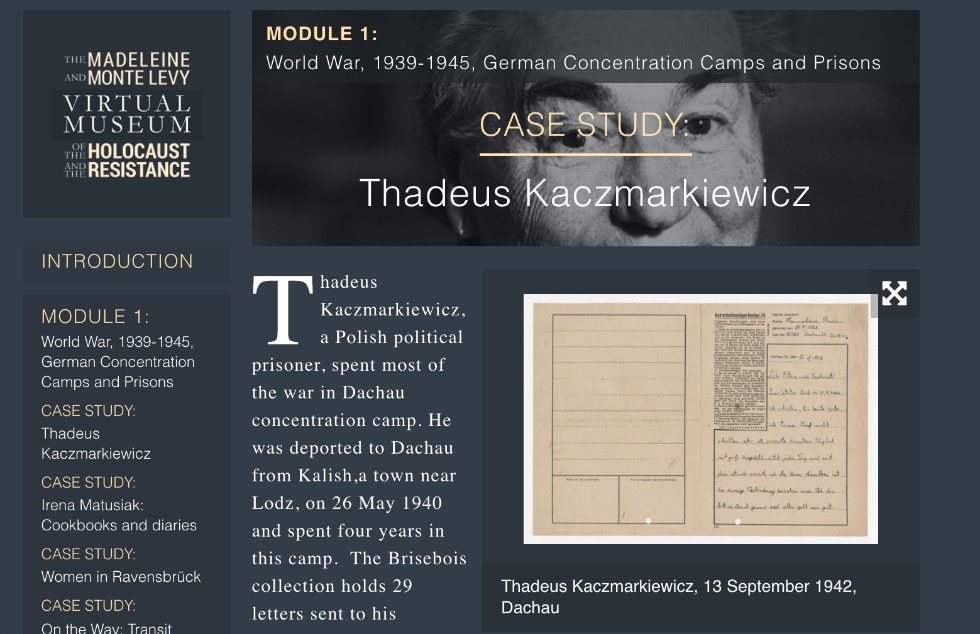Virtual museum tells poignant stories of survival and resistance during World War II

The newly re-designed Madeleine and Monte Levy Virtual Museum of the Holocaust and the Resistance uses moving personal accounts and other primary sources to help scholars and the public better understand the Holocaust and resistance movements of World War II.
BY Erica Balch
January 27, 2017
“The most indelible memory I have is the moment of arrival in the camp at Ravensbrück. As a child, I always had a sort of childish picture of how I imagined hell and, suddenly, there it was. An arched iron gate opens upwards, clanging and grating. Red lights of some sort. Night. And there we are, entering a black abyss. Pushed and shoved, we fall over each other. I had the feeling that we were descending into hell.”
This story, recounted by Holocaust survivor Irena Matusiak, is just one of the many poignant narratives contained in a recently re-designed and expanded online exhibit dedicated to helping scholars and the public better understand the Holocaust and resistance movements of World War II.
Using passages from concentration camp letters, first-hand accounts, videos, images, and explanatory text, the Madeleine and Monte Levy Virtual Museum of the Holocaust and the Resistance places the Holocaust and underground resistance movements in the larger context of World War II and documents the often devastating and tragic experiences of the people who lived during this time.
The display, developed by scholars and librarians at McMaster University Library, incorporates items from the extensive World War II collections housed in the Library’s William Ready Division of Archives and Research Collections.
Across five modules, the Virtual Museum explores a number of themes including life in the concentration camps and prisons, the Jewish resistance as well as the resistance movements in France and Poland, Nazi culture, the war effort in Germany, and Allied and German propaganda from 1933 to 1945.
The site also includes oral history interviews with Holocaust survivors. These clips, extracted from the USC Shoah Foundation Institute’s Visual History Archive,* add to the powerful, first-hand accounts contained in the exhibit’s static documents.
“The Madeleine and Monte Levy Virtual Museum of the Holocaust and the Resistance weaves together a range of primary source materials with historical narrative that helps us continue to shed light on these years of upheaval, destruction, and genocide,” says Wade Wyckoff, Associate University Librarian. “It shows both the depths of the tragedy and the strength and perseverance of the many who resisted and survived. We are proud that through our collections and expertise, we can help preserve and share these important stories.”
McMaster University Library began collecting materials related to the Holocaust and the Resistance in 2008 after acquiring a large collection of books, posters, newspapers, Nazi propaganda materials and letters–including 2000 letters to and from prisoners in concentration camps–from noted collector, Michel Brisebois.
Over the past decade, the collection has continued to grow with several additional donations from Brisebois and others, as well as an ongoing effort to purchase books and documents on the subject.
The Virtual Museum was created with the scholarly contributions of post-doctoral fellows Noah Shenker and Ekaterina Neklyudova and librarian Myron Groover.
The site was created in part with funding from Madeleine and Monte Levy.
* The full Visual History Archive database of more than 54,000 eyewitness testimonies to the Holocaust and other instances of genocide from around the world is available to McMaster students, faculty and staff, and to visitors in the campus libraries.
